Eight Hours in Edinburgh
"Experience Edinburgh's contrasts: hike Arthur's Seat for sweeping vistas, stroll the medieval Royal Mile, and savor history—even with just a day to explore."
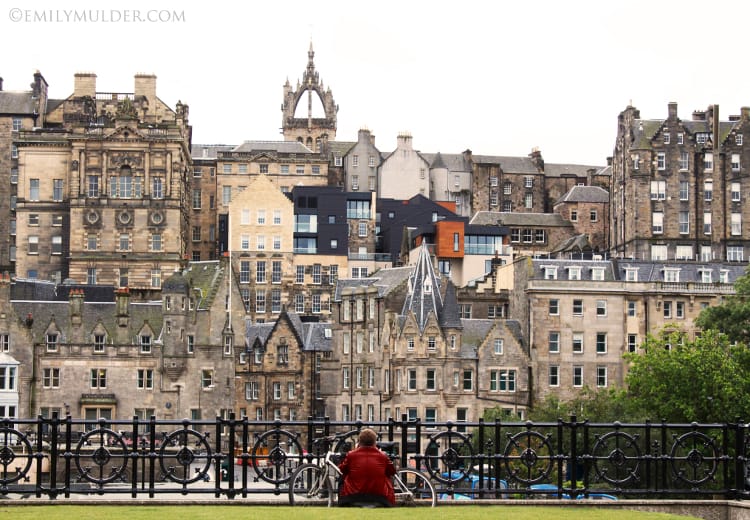
Frequent travellers will know that sometimes you need to either get the bang for your buck, or time. I’m a big proponent of the ‘relax and roll with it’ method of travel, which is how I often find the best things, by wandering off the beaten path. But sometimes that’s simply not logical. I almost never consider people watching in a café a poor use of time, but if I’ve spent $20 or more (or the equivalent in any currency) on a train ticket, that sentiment can quickly change. This was put to the test when the opportunity to visit Edinburgh arrived, and I grabbed it – even though it meant my time there would be limited to a day.
Without a long lead-in time, I quickly discovered that the price of train tickets was only slightly shy of astronomical. Fresh off a summer visit to the States, where I’d been able to embrace the multitude of cheap buses between Washington, DC and New York, I compromised by taking Megabus from London to Scotland for a cool £17. Less cool, it should be noted, was the nine-hour transit time – made even worse by the rugby team we picked up in Manchester.
I find that a person’s ability to handle long distance road travel is often unique to how and where they were raised. I am conditioned for life to spend hours on the road because I grew up in Wyoming, where no alternative existed. If you wanted to get somewhere, you simply had to put your 90s mix tape in the deck and keep driving until you got there.
That said, if you know that you start to get restless after several hours in a moving vehicle, I’d recommend planning ahead and saving for the train (I took National Rail on the way home, which felt like the lap of luxury in comparison and only took four hours).
But back to Edinburgh!
The first thing one notices when walking out of the station is the way the city is split into two parts, which are called, true to literal form, the Old Town and New Town, with a wide gully that separates them. The new side places Edinburgh firmly in the 21st century amongst popular stores and highly accessible bus routes.
Then you turn in the direction of the Old City and you’re met with the dense, layered face of the city’s ancient side, which looks like this:
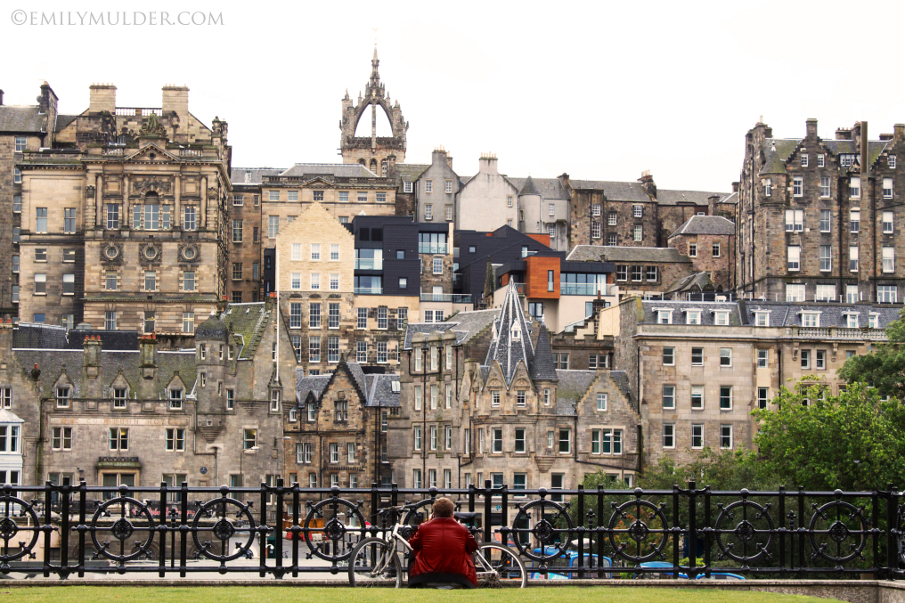
I’ve been to many places where medieval churches or buildings still stand, but none that embody the era so fully as Edinburgh. It’s a city that was already a capital in the 13th century, and its heritage shows.
Faced with the dichotomy Old Town and New Town I decided, with the advice of a local Scot-savvy friend, to take a similar tack and spend my precious hours on two highly contrasting endeavors. First, to climb to the top of the towering bluff that rises up behind the city (it’s actually a dormant volcano!), culminating in a large vista with spectacular views, which is known as Arthur’s Seat.
Arthur’s Seat is the highest point in Holyrood Park, and if, unlike me, you have time to do more than just scramble to the top, it would be well worth getting yourself a guidebook and checking out the park’s other highly-rated attractions, which include St. Anthony’s Chapel and Duddingston Loch.
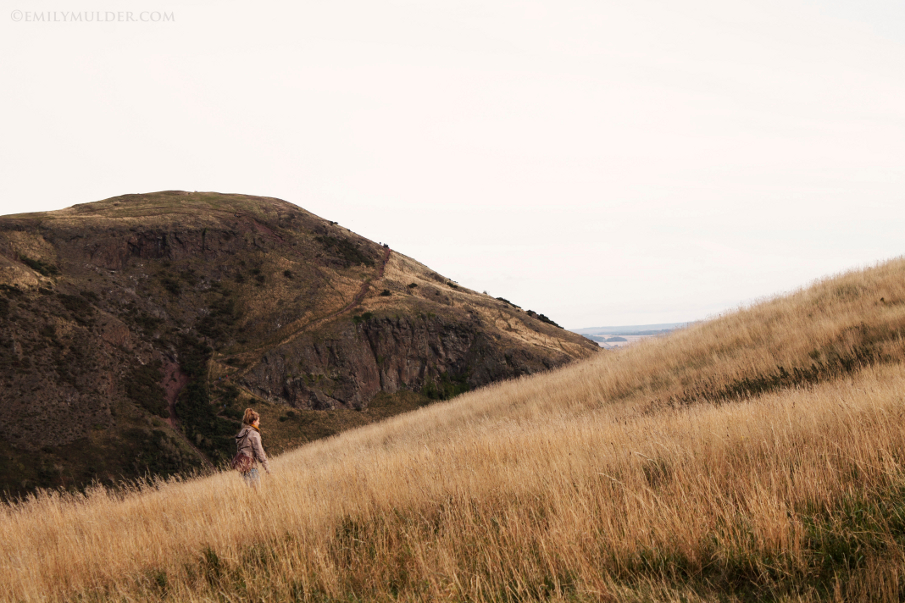
The hike, while steeper in some places than others, was a great choice for a non-seasoned hiker who was wearing a pair of thin-soled city boots; a gradual incline with bluffs for picture-taking and pausing along the way, enough to remind you that you should really hit the gym more often, but not enough to break a real sweat. It would generally be a suitable endeavor for people of many ages and fitness levels.
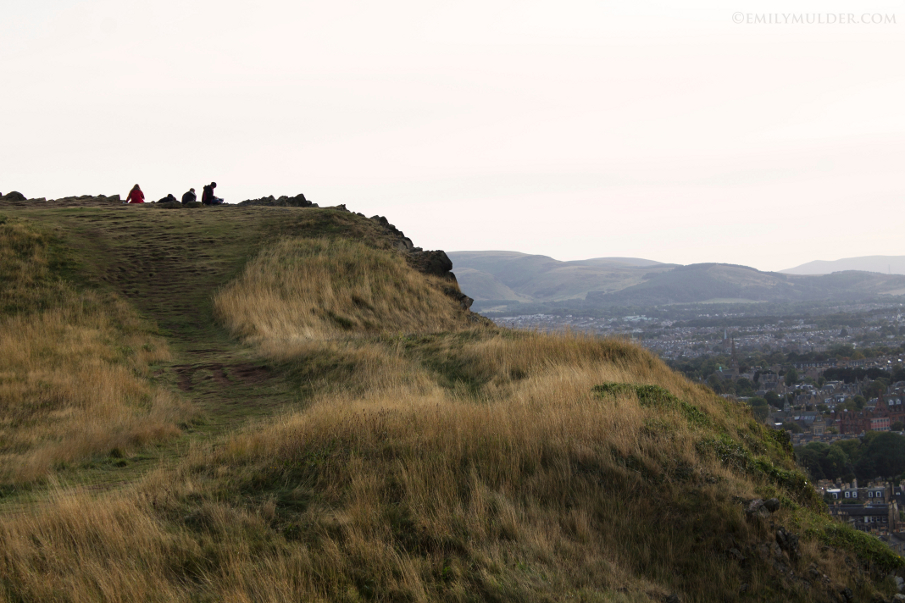
Only taking about thirty minutes to reach the top – it looks far more daunting from the ground – the views made it well worth it. The panoramas extend all the way across the city rooftops in one direction, and all the way to the sea in the other. Everything you’ve ever learned about Scottish history somehow manages to come slightly more alive when looking at it from a great, detached height.
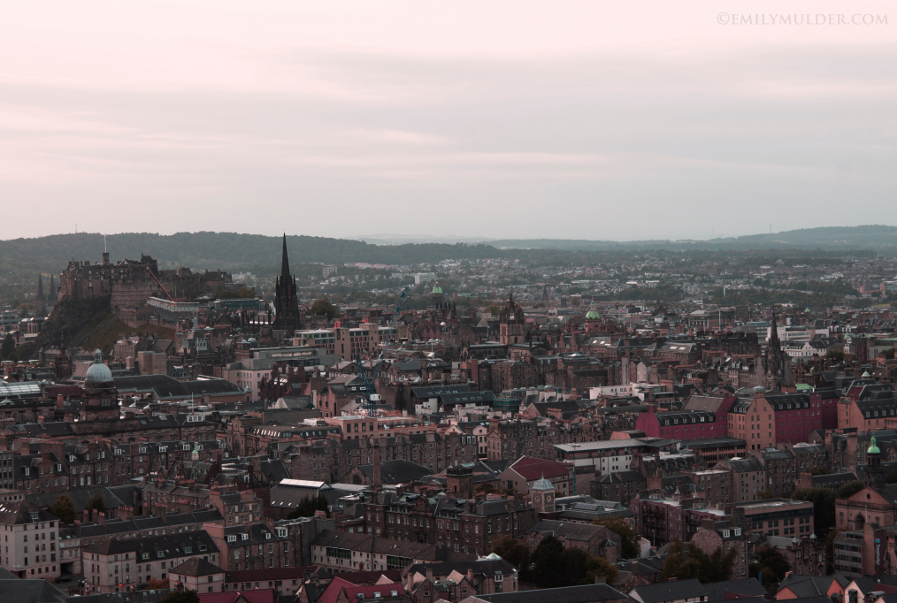
Luckily, taking in the views from the top of the bluff also does a great job in ramping up the enthusiasm to get back down and into the thick of it. And not too far from the bottom was the destination for the second half of my day: the gorgeous Royal Mile. Especially for those with abbreviated time, this walk through the center of the capital gives a complete taster of tones and architecture. And, true to its name, it is only an estimated single mile long, so it won’t put a huge dent in your schedule.
Classic red British phone booths against darkened gothic stone characterize the thoroughfare, with some visual mix where you can see the sections that were rebuilt following the Great Fire of Edinburgh in 1824. The street is lined with pubs, whisky shops and sellers of leather and authentic woolen goods, and is an excellent place to pick up authentic, quality gifts or souvenirs, rather than those found in gimmicky shops.
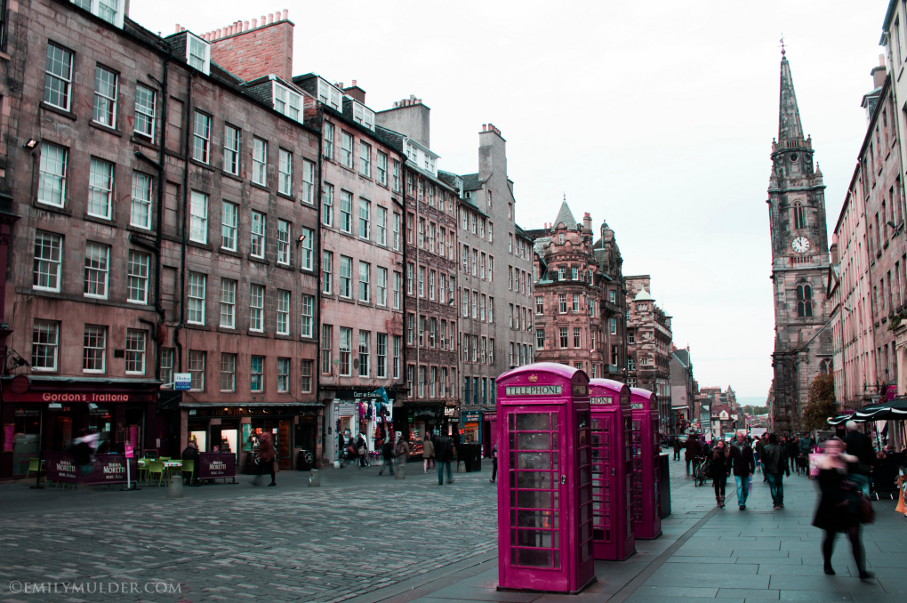
If you’re planning a trip to Edinburgh, think about doing so in the summer, when the city’s robust cultural calendar is at its peak. In August, you can take advantage of The Edinburgh Festival, which includes the world-renowned Festival Fringe and Military Tattoo.
And, as always, take the opportunities when they arise, but also a moment to stop and reflect. Even when you’re rushing, even when you only have eight hours. Reflect and enjoy the view.
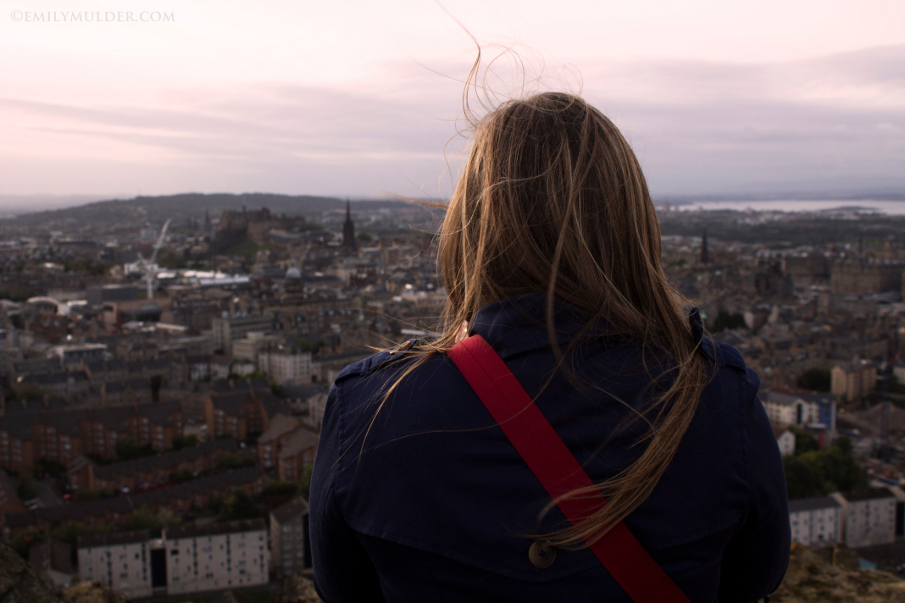
For more photos and videos of Edinburgh and my other travels, you can follow me on Instagram: @emu_media.




